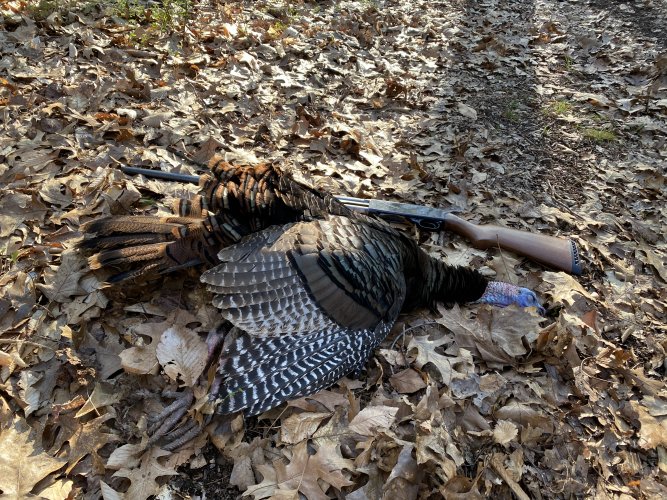Stsinclair
Member
Hey everyone, first thread here and I'm hoping its not an over played question. I've already searched and read as much as I could on previous threads.
This is my first year hunting Turkey here in CO, I tried a few times on the front range for Merriams but no dice. However in SE CO I've had much better opportunities with Rios, only problem is I cant get them in range/eyesight. For situational knowledge, Ill be set up under a tree or tucked into some bushes sometimes with a single hen decoy 30 yards out in a clear spot or no decoy. I've either just decided to try the spot due to sign and heard a gobble within ten minutes or so of sitting and soft calling, or I've heard a gobble and I set up within what I believe is 60-100 yards from where I heard it last. In both situations I've gotten at least two or three responses from him each getting closer and closer till I feel he's within 20-30 yards but behind some taller grass or bushes etc. Then just like that I never hear/see him again. Its happened on three occasions. I don't make any fast fidgeting movements or noises, pretty disciplined in that regard. I use some regular yelps mixed in with some purrs and clucks spontaneously. Any idea what I could be doing wrong? Advice?
On one occasion I actually spotted the gobbler through the brushes, about 60 yards away. Just kinda strolling through feeding and not really response gobbling to my calls but randomly gobbling and looking around. I didn't have a decoy then and I just watched him stroll through some more bushes/juniper and then disappeared.
I appreciate any and all replies, best of luck to those of you still trying to fill your tags or getting ready for the season opener!
This is my first year hunting Turkey here in CO, I tried a few times on the front range for Merriams but no dice. However in SE CO I've had much better opportunities with Rios, only problem is I cant get them in range/eyesight. For situational knowledge, Ill be set up under a tree or tucked into some bushes sometimes with a single hen decoy 30 yards out in a clear spot or no decoy. I've either just decided to try the spot due to sign and heard a gobble within ten minutes or so of sitting and soft calling, or I've heard a gobble and I set up within what I believe is 60-100 yards from where I heard it last. In both situations I've gotten at least two or three responses from him each getting closer and closer till I feel he's within 20-30 yards but behind some taller grass or bushes etc. Then just like that I never hear/see him again. Its happened on three occasions. I don't make any fast fidgeting movements or noises, pretty disciplined in that regard. I use some regular yelps mixed in with some purrs and clucks spontaneously. Any idea what I could be doing wrong? Advice?
On one occasion I actually spotted the gobbler through the brushes, about 60 yards away. Just kinda strolling through feeding and not really response gobbling to my calls but randomly gobbling and looking around. I didn't have a decoy then and I just watched him stroll through some more bushes/juniper and then disappeared.
I appreciate any and all replies, best of luck to those of you still trying to fill your tags or getting ready for the season opener!





